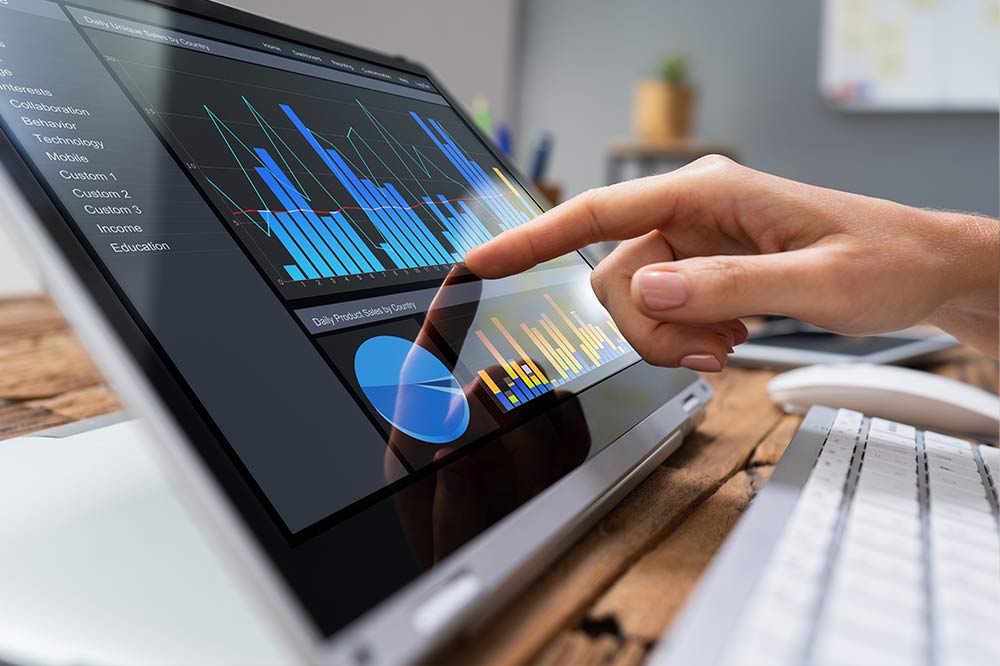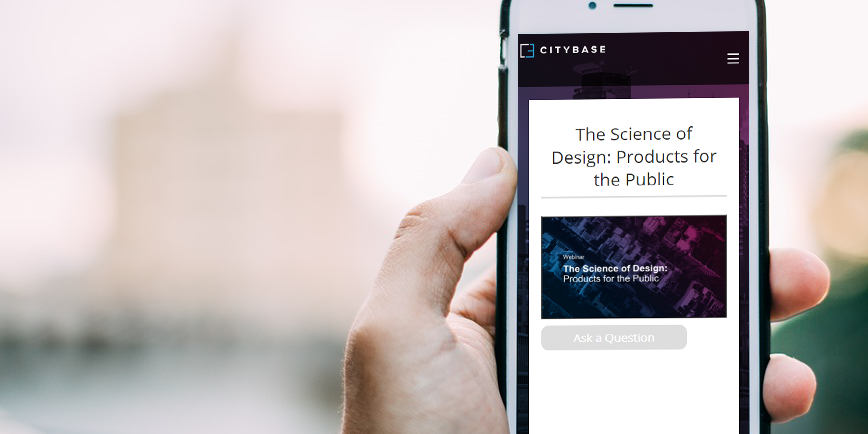Webinars are not a new technology, but with the recent COVID pandemic and lockdown measures, more and more organisations are turning to webinars to communicate with their prospect, customers, employees - basically the world at large.
One consequence of this increased interest in running webinars is there are now many people who have never run webinars now expected to create, plan, and run one. Not an easy task!
There are so many different elements to consider when running a webinar - the content, the promotion, the platform, and everything in between. It can get a little overwhelming. That’s why we’ve put together 5 simple steps for running a successful webinar (or webinars).
1. Plan
The first thing you need to do to run a successful webinar is to plan it, and I don’t just mean the content itself. We like to think of the campaign around a webinar as a sprint, and to be successful in that sprint you need to have a concrete plan to follow.
The first element of this is to set a goal. What do you want your webinar to achieve? It’s important to answer this question because it will inform everything else. Are you generating leads? Or is your webinar for brand awareness? Maybe it’s to generate revenue through sponsorship? Once you have your goal, you can start to flesh out the rest of your plan.
Once you have this, you can build out the more tangible aspects of your webinar
- What type of webinar will it be - live, simulive, on-demand?
- Who will your speakers be?
- What day/time will you run your webinar?
- What sort of tools will you use for engagement?
An important step in answering these questions is identifying who your audience is. I don’t mean you need specific names, but audience research is a key element to putting together a successful webinar programme. It’s impossible to create a content experience that will engage your audience if you don’t know who they are.
Are you communicating with a B2B audience or is it B2C? Are they professionals or are you trying to reach hobbyists? Building your audience demographics and tailoring not only your webinar content, but promotion to this, will help ensure you not only have people attend your webinar, but that they’ll be engaged.
2. Choose your platform
This may seem like an obvious step, but it’s an important one and it’s one I like to make AFTER I’ve determined my goals. Why?
Not all webinar platforms are created equally. There are some major differences that may make running one type of webinar difficult on one platform, but very simple on the other. For example, not all webinar platforms can run true simulive webinars wearing you can combine a pre-recorded with presentation with a live Q&A. If your goal is to generate leads while maximising ROI, this is an important feature to have.
We’ve written before about what questions to ask when you’re researching webinar platforms, but the most important take away is to make sure they have the functionality you need at a budget you’re willing to pay.
Once you have the functionality sorted out and a platform that works for you, you can move onto building your webinar.
3. Create your content
For the purposes of this blog, when I say content, I’m including your webinar pages i.e. registration page, thank you page, auditorium, etc.
This is the most important aspect your pre-webinar work because your content is what your audience will engage with. Are your webinar pages branded and engaging? Do they include information about the webinar and your speakers?
Then there is the content for the webinar itself. If you’re using a slide deck, you’ll want to follow best practice here. The biggest thing to remember is that less is more! It’s a cliche for a reason. You don’t need to transpose your entire script onto your slides. Pull out key words or images that will enhance the points your speakers are making.
And remember, you don’t have to rely solely on PowerPoint. There are so many different cool ways you can create engaging webinar content - videos, animations, GIFs, even just webcams. Think back to those personas you built and think about what would resonate the most with your audience.
Whatever content type you choose, scripting it out is vital. This will help your speakers stay on topic and also provide you with great content to pull from when you’re promoting your webinar.
Speaking of promotion....
4. Promote, promote, promote
There is nothing worse than putting in the time and effort to create a webinar and then no one shows up on the day. No matter how much thought you put into your demographics, they are not going to show up if you don’t have a comprehensive promotional campaign.
The most important thing to keep in mind is to ensure your promotional campaign is omni-channel. You are not going to generate high audience numbers by relying on one or two channels. If you’re worried about how exactly to promote your webinar and where, here are some the channels you can focus on:
- Email: If you have an engaged contact list, this will be your number one source for attendees. You’ll want to have an initial invite and then follow up 3-4 times with non-openers. And don’t forget to send an invite on the day of your webinar - at WorkCast, we see a 20% uplift in registrants from same day invites.
- Social media: This is a great way to build some buzz for your webinar. Twitter, LinkedIn, and Facebook are where we find the most success with webinar registrants. You may even want to put some budget behind paid social campaigns to increase your exposure.
- Paid Search: PPC is an excellent channel to use, especially if you’re looking to generate new leads. Just make sure that you do the requisite keyword research so that you’re bidding on the right keywords for your event.
- Blogs: Blogs are the heart of any inbound marketing campaign. They are a great way to generate organic traffic and position yourself as a thought leader. Consider writing blogs in the leadup to your webinar that touch upon related topics, and then include CTAs in your blog pointing to your webinar registration.
When it comes to timing for promotion, you’ll want to start at least 4 weeks out from your live webinar date.
Don’t worry if you don’t have all the content sorted, you can still start building buzz and then add in details later.
If you're still stuck our 7 useful tips for promoting your webinar might help!
5. Follow-up
So you’ve planned your webinar, created the content, promoted it and run it - you’re done right? Wrong.
Following up with webinar attendees and registrants who didn’t make it ensures that they stay engaged with your content and your brand. As our sales team likes to say, it keeps them warm. And a warm lead is much more likely to convert - whether that means attending another webinar or buying your product.
Following up can be as simple as sending out the on-demand recording and a post-event survey. Or you can create a bespoke download that you email later to keep them interested in the topic. You can even have your new business team reach out to attendees directly, though this one can come off as a bit aggressive depending on the type of webinar you hosted.
Balance is key here, so make sure any follow-up you do has value not just for you but for your audience as well.
Running a webinar can be daunting, but doesn't have hard. If you follow these steps you'll be well on your way to running a successful webinar in no time.
Take your webinar planning to the next level, with our Ultimate Webinar Checklist.
Share this
You May Also Like
These Related Stories

The Ultimate Checklist for Hosting a Webinar & More

Webinar Platform Comparison: How to Choose the Best Platform



